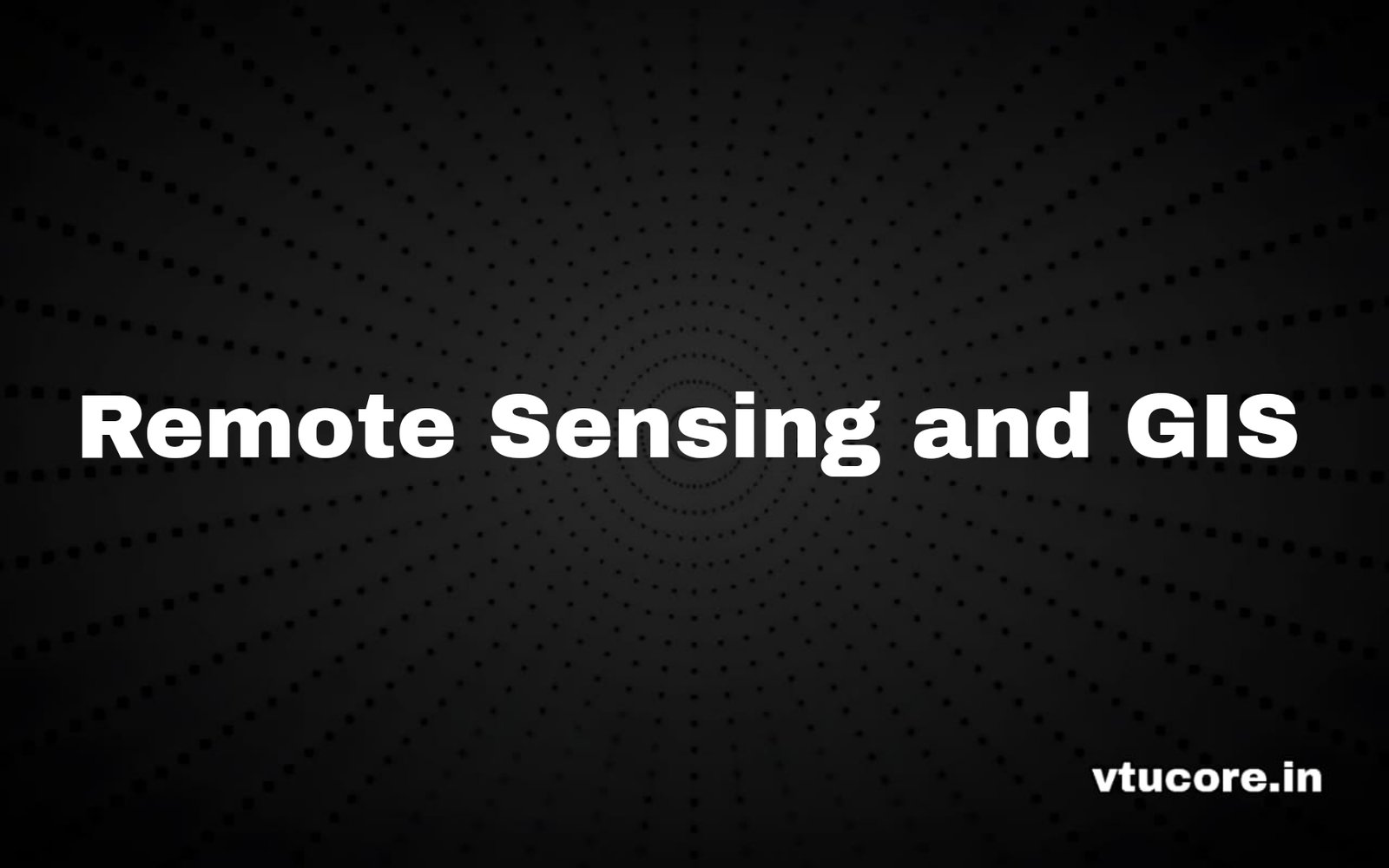Remote Sensing and GIS BCV515D
Course Code: BCV515D
Credits: 03
CIE Marks: 50
SEE Marks: 50
Total Marks: 100
Exam Hours: 03
Total Hours of Pedagogy: 40H
Teaching Hours/Weeks: [L:T:P:S] 3:0:0:0
Remote Sensing:
Definition, types of remote sensing, components of remote sensing, electromagnetic spectrum, Black body, Atmospheric windows, energy interaction with earth surface features. Spectral reflectance curve. Platforms and sensors. Sensor resolutions. Types of satellites Indian and other remote sensing satellites (IRS, IKONS and Landsat). Principle of visual interpretation – key elements.
Photogrammetry:
Introduction types of Photogrammetry, Advantages Photogrammetry, Introduction to digital Photogrammetry. Aerial Photogrammetry: Advantages over ground survey methods- geometry of vertical photographs, scales of vertical photograph. Ground coordination relief displacement, scale ground coordinates – flight planning.
Geographic Information System:
Introduction, Functions and advantages, sources of data for GIS. Database Types, advantages and disadvantages. Data Analysis.-overlay operations, network analysis, spatial analysis. Outputs and map generation. GPS- components and working principles.
Applications of GIS, Remote Sensing and GPS: (1)
Water Resources engineering and management- prioritization of river basins, water perspective zones and its mapping, Highway and transportation -highway alignment, Optimization of routes, accident analysis, Environmental Engineering- Geostatistical analysis of water quality, rainfall.
Applications of GIS, Remote Sensing and GPS: (2)
Urban Planning & Management, urban sprawl, Change detection studies, forests and urban area, agriculture, Disaster Management. Layouts: Dead end, Radial, Grid iron, Circular system.

